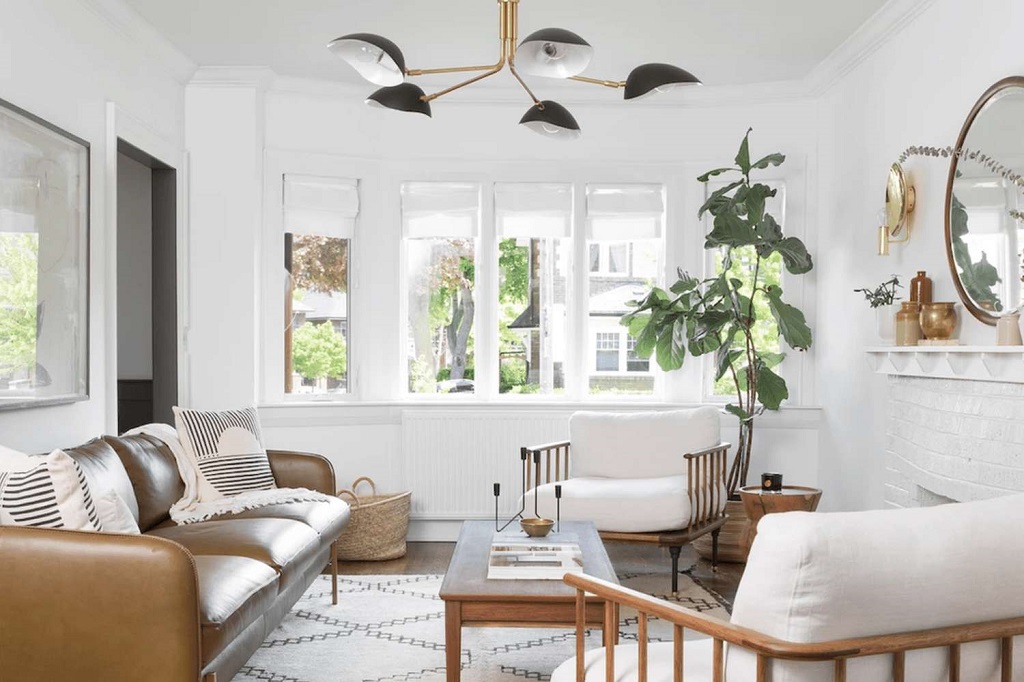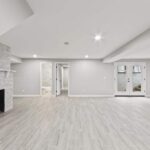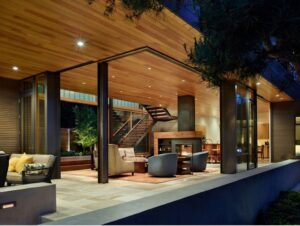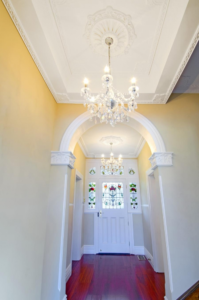
Lighting plays a transformative role in our homes, shaping ambiance, functionality, and even our mood. The right lighting can make a small room feel expansive, highlight artwork, or create a cozy reading nook. But with many lighting options available, choosing the perfect fixtures for each room can be overwhelming. This comprehensive guide empowers you to navigate the world of lighting, providing valuable insights into light types, fixture styles, and practical tips for creating the ideal lighting scheme for every room in your house.
Understanding the Language of Light
Before diving into specific fixtures, let’s explore the fundamental aspects of lighting:
- Light Color Temperature: Measured in Kelvin (K), color temperature refers to the “warmth” or “coolness” of light. Warm light (around 2700K) creates a cozy atmosphere, while cool light (around 5000K) promotes alertness.
- Lumens: This unit measures the brightness of light. Higher lumens translate to a brighter light source. Consider the desired light level for each room when choosing fixtures.
- Task Lighting vs. Ambient Lighting vs. Accent Lighting: These terms define the purpose of the light:
- Task Lighting: Focused and bright light for specific activities, like reading or under-cabinet kitchen lighting.
- Ambient Lighting: General illumination for a room, often provided by overhead fixtures like chandeliers or ceiling lights.
- Accent Lighting: Using sconces or spotlights, draws attention to specific features, like artwork or architectural details.
Layering Light: Creating a Balanced Lighting Scheme
The key to a successful lighting design is layering. Instead of relying on a single light source, combine different types of lighting to create a cohesive and functional environment:
- Start with Ambient Lighting: Establish the overall light level in the room with ceiling fixtures, pendants, or sconces.
- Layer in Task Lighting: Incorporate task lights for specific activities, like reading lamps beside couches or desk lamps in a home office.
- Don’t Forget Accent Lighting: Accent lighting adds depth and visual interest by highlighting artwork, architectural details, or furniture.
Lighting Solutions for Every Room: A Room-by-Room Guide
Let’s delve into specific lighting considerations for different rooms in your home:
- Living Room: Use a combination of ambient lighting (chandelier, recessed lights), task lighting (floor lamps, table lamps) for reading or hobbies, and accent lighting (sconces) to highlight artwork or a fireplace. Consider dimmers to adjust the mood for different occasions.
- Kitchen: Task lighting is crucial in the kitchen. Under-cabinet lighting illuminates countertops, while pendant lights over islands or sinks provide focused light. Recessed lights can provide general room illumination.
- Bathroom: Layered lighting is essential in bathrooms. Bright overhead lighting is necessary for overall illumination, while task lighting near the mirror ensures good visibility for grooming. Consider wall sconces on either side of the mirror for a more spa-like feel.
- Bedroom: Create a calming atmosphere with ambient lighting (chandelier or ceiling fixture) and task lighting (table lamps on nightstands) for reading. Dimmer switches are ideal for creating a relaxing environment before sleep.
- Dining Room: A statement pendant light above the dining table sets the mood for meals. Consider dimmer switches to adjust the brightness depending on the occasion.
Beyond the Basics: Additional Lighting Considerations
- Natural Light: Maximize natural light by keeping windows uncovered and incorporating skylights where possible. Natural light can significantly enhance the ambiance of a room and reduce reliance on artificial lighting.
- Smart Lighting: Consider smart lighting options that allow you to control lights remotely, set schedules, and create different lighting scenes for various activities.
- Décor and Style: Choose light fixtures that complement the overall style of your room. From modern pendant lights to traditional chandeliers, the style of the fixture can add a design element and enhance the aesthetics of the space.
The Final Touches: Putting it All Together
Creating a successful lighting scheme requires careful planning and consideration of your needs and preferences. Here’s a final checklist to ensure a well-lit and inviting space:
- Make a List: Identify the activities performed in each room and note the specific lighting needs for each area.
- Consider the Mood: Think about the desired atmosphere for each room. Do you want it to be bright and energizing or warm and calming?
- Sketch a Plan: Roughly sketch a plan for each room, indicating the placement of different lighting types (ambient, task, accent).
Beyond the Checklist: Troubleshooting Common Lighting Issues
Even with careful planning, you might encounter some lighting challenges:
- Too Bright or Too Dim: If a room feels overly bright, consider using lower-wattage bulbs or adding dimmer switches. Conversely, if a room feels too dim, explore brighter bulbs, additional fixtures, or strategically placed lamps.
- Uneven Lighting: Uneven lighting creates an unbalanced and potentially harsh environment. Ensure you have a good mix of ambient, task, and accent lighting to distribute light evenly throughout the room.
- Eye Strain: Opt for warm color temperature bulbs (around 2700K-3000K) to reduce eye strain, especially in areas like living rooms and bedrooms where you spend extended periods.
- Energy Efficiency: Consider using LED bulbs throughout your home. LEDs offer superior energy efficiency, last longer, and generate less heat compared to traditional incandescent bulbs.

Lighting for Special Effects: Setting the Mood
Lighting can dramatically impact the mood and ambiance of a space. Here are some tips for creating specific atmospheres:
- Romantic Ambience: Dim the lights, use candles strategically, and incorporate warm color temperature bulbs to create a cozy and intimate environment.
- Movie Night: Invest in blackout curtains to block out external light and create a more theater-like experience. Consider using a floor lamp with a dimmer switch to adjust the brightness during the movie.
- Home Spa Retreat: Dim the lights in your bathroom and use warm color temperature bulbs to create a spa-like atmosphere. Consider adding scented candles for an extra touch of relaxation.
Related: How to Make a Dark Hallway Lighter and Brighter
The Final Verdict: Lighting Up Your Life, One Room at a Time
Lighting is more than just illumination; it’s a powerful tool for shaping the ambiance, functionality, and mood of your home. By understanding the core principles of lighting design, exploring different fixture options, and considering your specific needs for each room, you can create a well-lit and inviting space that reflects your style and preferences. So, unleash your inner lighting designer, experiment, and let your home shine brightly!





